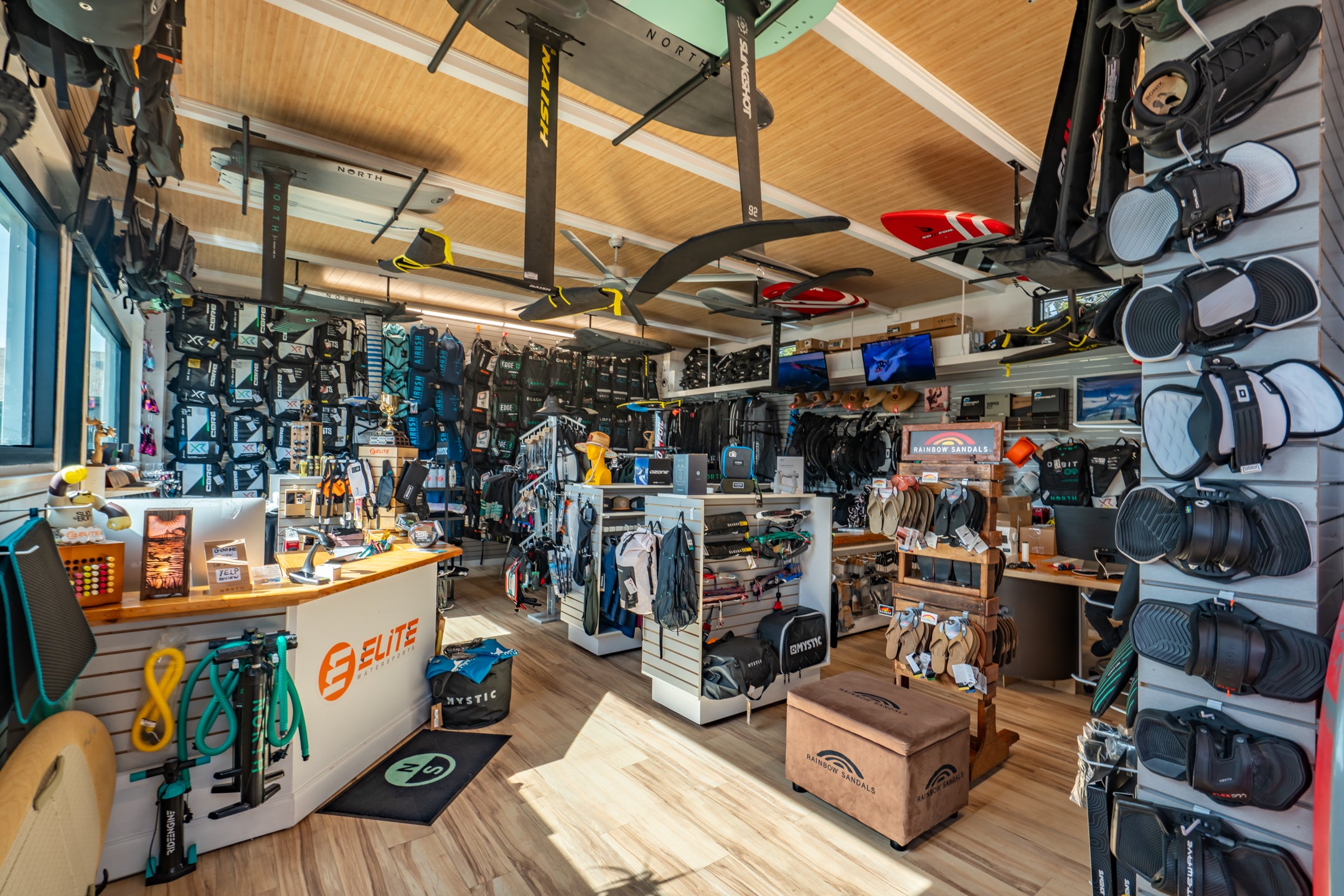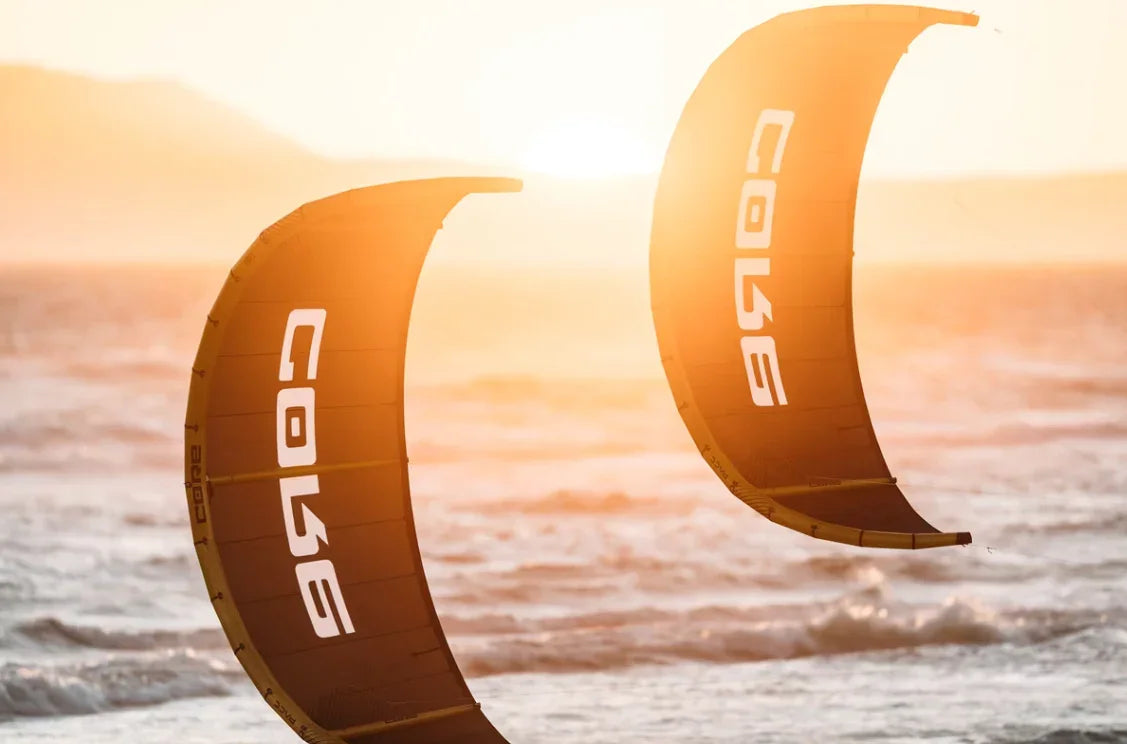ELITE WATERSPORTS
Last updated 8-12-2024
Introduction to Kiteboarding Twin Tip Setup
Everything you need to know.

How do I set up my kiteboard?
Kiteboard Strap Setup: Today, we will discuss how to set up your twin-tip kiteboard to get the most out of it based on your weight, riding style, and other considerations.
Wide kiteboarding stance vs. narrow stance: The width of your kiteboarding foot straps or bindings depends on many factors. Consider your height, the size and style of kiteboard you use, the length of your kiteboard, and the discipline you practice.
This guide will walk you through every detail to ensure your kiteboard is performing at its best.
We'll cover the right kiteboarding stance, the angle of your straps or kite bindings, the size of your fins, and much more.
Remember, your kiteboard should be tailored to your body and specific needs. Proper setup is crucial for optimal performance.




Table Of Content
- Kiteboarding foot pad and foot strap placement
- What kiteboard inserts should I use? Customizing your kiteboard.
- Whats the best kiteboarding stance?
- Understanding kiteboarding fins.
- Pro Tips and Hacks for kiteboarding fins.
Kiteboarding foot pad and foot strap placement.
Correct Kite strap placement: Finding the right angle for your stance is essential for maximizing your kiteboard's performance.
We recommend starting with a medium duck stance. This means your toes will point out to the side just a little. Sort of like they do when you naturally stand.
This should give you a good balance between heel-side and toe-side control. Kiteboarding foot straps have plenty of room for various stances, so this stance works great for most riders.
The perfect binding setup: If you want a custom fit, place your kiteboard on the ground in front of you. Stand in front of it with your feet about shoulder-width apart and jump up once.
The purpose of this jump test is to see where your feet naturally land and how they are positioned when you brace for a hard landing. This will give you a good starting point for your strap setup.
Pay attention to how you land. How wide are your feet? How much did your toes naturally point forward or out?
The medium stance is the perfect starting point; you will probably feel comfortable with this. If, for some reason, you feel very uncomfortable, take note of the inserts you naturally land in line with so you can modify the straps. This test will give you a good look into your own body mechanics.

Key Takeaway: Proper foot-pad placement ensures balanced and controlled performance. Comfort is king in kiteboarding; make sure your knees feel good when you squat.
Comfort is most important: A setup that prioritizes your comfort will keep you relaxed and focused on your ride. It will also help with hard impacts as you progress later.
Pro Tip: Matching brands for boards and straps often gives you better compatibility and range of movement. Some brands have inline inserts and other brands of off-center inserts. You always want to match these up for a good setup. Otherwise, you risk losing your range of motion and adjustability.
Customization tip: Do the jump test to see what inserts and how ducked your feet are when bracing for a hard landing. You should try this several times to get the best average. Make sure you're knees and hips feel good in the squat position.
What kiteboard inserts should I use? Customizing your kiteboard.
What inserts to use on my kiteboard? Most kiteboards have three to four inserts, so you can adjust your kiteboarding foot straps. Weight is less important than height when choosing your stance. You can use the jump test and follow these guidelines to find the proper stance.
Shorter riders should use the inner insert, average-height riders should use the middle inserts, and taller riders should use the outer inserts.
What's the best stance for beginner kiteboarders? If you pick your kiteboard from a good kitesurfing shop, they will set you up with the correct size. The medium stance will likely be perfect for you and is where you should start. Trust in the expertise of your kiteboarding shop to guide you in the right direction.
What's the best stance for big air kiteboarding? The size of the kiteboard is also a consideration. For example, some big air riders like to ride a very small kiteboard to hold down their edge in powerful wind. You might see a 180-pound rider size down from a 139 to a 131. The inserts on these two boards will be very different, so make sure you feel good about powered jumps. Consider using one insert out to compensate for the difference in board size.
What's the best stance for Freestyle kiteboarding? Freestyle riders love to ride excessively large boards and must consider this when choosing the correct inserts for their straps or kiteboarding bindings. The same 180-pound kiter might go from a 139 to a 147 kiteboard. Consider moving to the innermost insert to compensate for this size difference. Always use the jump test and make sure your knees feel good when taking an impact.
The perfect Kiteboarding stance and finding the right Angle: The duck angle of your straps is crucial. A stance that's too square can put undue pressure on your knees, while an overly ducked stance can cause discomfort when shifting directions.Find a balance in your duck stance to avoid knee strain.
Pro Tip: Ensure your feet can move freely within the straps for better control. Make sure you are using a good size.
Balancing Between Heel-Side and Toe-Side: Your strap placement should also consider your riding style. If you frequently switch between toe-side and heel-side, a more centralized strap placement will be beneficial. However, if you ride primarily on your heel side, you can favor that edge but avoid going too extreme to prevent excessive spray and fatigue.

What's the best kiteboarding stance for riders under 5'5'' tall? Adjusting the placement of your straps based on your height can make a significant difference. For shorter riders (around 5 feet tall), shift the straps inward. Usually, the innermost insert is ideal.
What's the best kiteboarding stance for riders between 5'6'' - 6'0'' tall? The middle two inserts are generally the best starting point. If you're using the right size kiteboard this should work well. Always feel free to adjust for comfort.
What's the best kiteboarding stance for tall people over 6'1''? If you're taller than 6 feet, you can move the straps outward to maximize energy transfer.
You want to fully utilize the edge of your kiteboard to ride upwind and execute good kiteboarding jumps. Most importantly, you want your knees to be comfortable to absorb the impact of landing.
Key Takeaway: Adjust strap placement according to your height for better control.
Pro Tip: Moving the straps closer together makes it easier to shift weight, while moving them outward requires more energy and allows for greater control of the edge of the kiteboard.
Understanding kiteboarding fins.
Choosing the right fin size: Fin size is typically determined by the board size and style. For example, a 35mm to 48mm fin is standard for most freeride and big air kiteboards.
However, your conditions and style may require adjustments. Standard fin sizes are matched to board size and will come in stock with your kiteboard, but they can be adjusted.
Pro Tip: Smaller fins offer more playfulness in flat water, while larger fins provide better grip in choppy conditions.
Adapting to Different Conditions: Depending on the water conditions—whether flat or choppy—you might want to adjust your fin size. Smaller kite fins work well in flat water, making the board more playful. Larger fins are better for choppy conditions or when you need more control. Big fins are helpful for light wind as they help you hold down a better edge to ride upwind. Big air riders also like to use big fins to help hold down the extra power and get extra grip in stronger winds.


Riding with no kiteboarding fins? Many riders will spend time riding finless to perfect their edge control. Don't start here, but if you're an intermediate kiteboarder who wants to master control of their kiteboard, this is the perfect way to build the skill fast. Big air riders and freestyle kiteboarders will do this frequently. Some riders do this because it is the most playful and free-feeling ride you can get.
There is a camp of riders who think fins are useless, but pro riders can take things too far. We see this with the crazy trend of super small 120 cm kiteboards for grown men in big air and the 162 cm kiteboards for freestyle. There is usually a point of diminishing returns, and the middle ground is best for most.
Try riding finless as a training drill and experiment with different-sized fins. We have a selection of different-sized kiteboarding fins, so you can pick up extras if you want something different.
Key Takeaway: Adjust fin size based on water conditions and riding style.
Pro Tip: Keep a couple of fin sets to adapt to different conditions.
Expert tip: Ride finless sometimes to improve edge control.
Pro Tips and Hacks for kiteboarding fins.
Quick Fin Setup Hack: When setting up your fins, start by placing one screw first. This holds the fin in place, making it easier to align the second screw. Avoid using power drills on carbon boards to prevent damage.
Loctite Your Screws: Use blue Loctite on your screws to prevent them from coming loose. This simple step can save you from losing screws and having to retighten them after every session. Don't use the red Loctite for your fins.
Protecting Your Kiteboard from Theft: One practical tip to prevent losing your kiteboard is to write your name and contact info on it. For added security, hide your details under the foot straps where they aren't easily visible. This can help you prove ownership if your board is lost or stolen.


Setting up your twin-tip kiteboard properly can make a world of difference in your riding experience. Attention to detail is critical, whether it's the foot-pad placement, the fin size, or the little hacks that keep your board safe and secure.
Take the time to customize your setup to fit your needs, and you'll see the benefits on the water. Experiment with different setups until you find what works best for you.
Why Elite Watersports?
The expert team at Elite Watersports is here to serve. If you have any kiteboarding related questions call us. We can build custom kiteboarding packages, book kiteboarding lessons or simply offer helpful advice. We're your one stop shop for kiteboarding knowledge.
Swing by the shop and say hello!
If you need help deciding on your first kiteboarding kite give Elite Watersports a call. We're happy to set you up with your first kiteboarding kite.
(727)-800-2202



Author

Ryan "Rygo" Goloversic
Tags
Kiteboarding
Kiteboard setup
You May Also Like
Want To learn more about kiteboarding?
Follow us to receive the latest update on our journey experience




